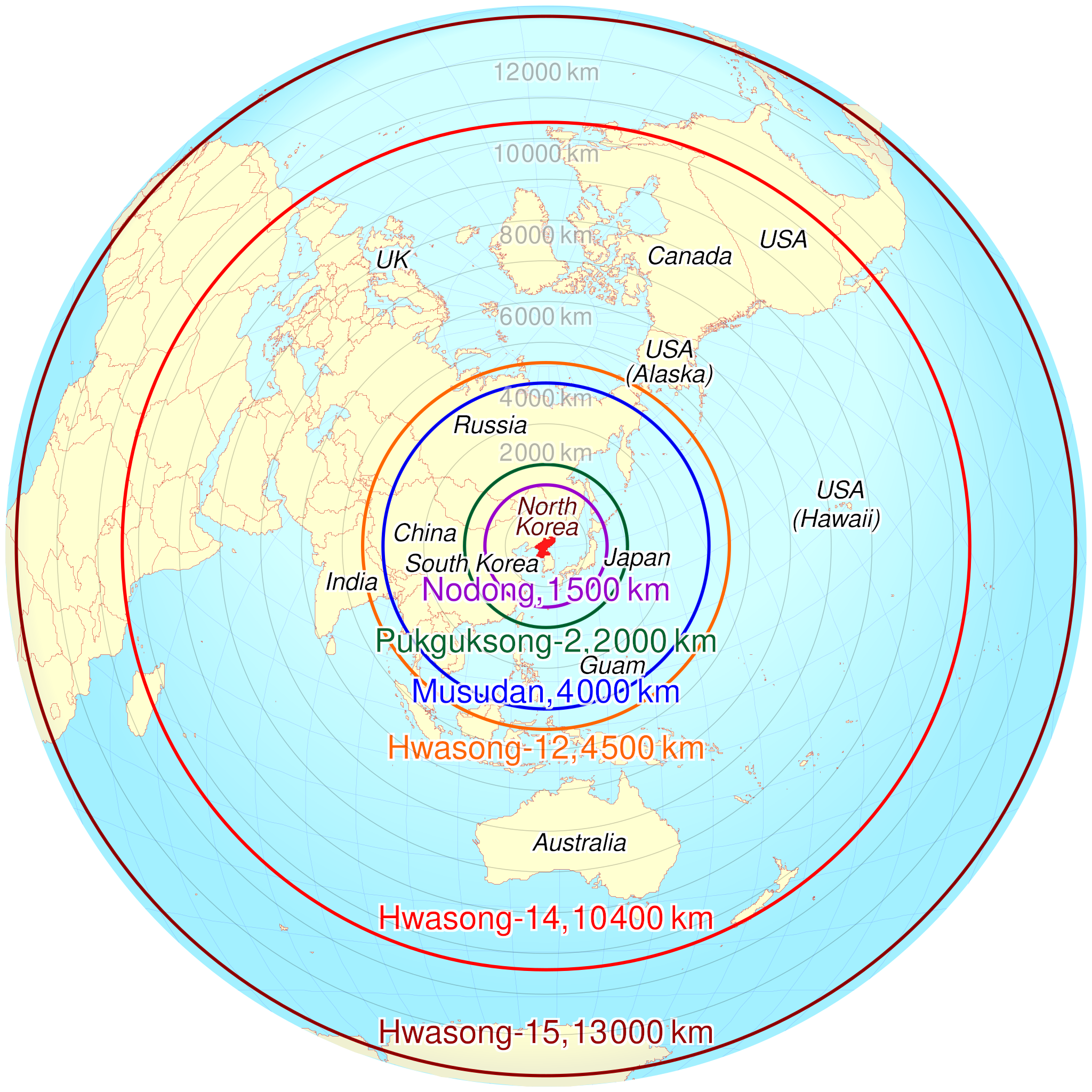North Korean Missile Range Estimated Map


David Chen
Data Visualization Specialist
David Chen is an expert in transforming complex geographic datasets into compelling visual narratives. He combines his background in computer science ...
Geographic Analysis
What This Map Shows
The "Estimated Maximum Range of Some North Korean Missiles" map provides a clear visualization of the potential reach of various missile systems developed by North Korea. This map highlights the geographical areas that could be impacted by missile launches, showcasing not only the range of these weaponry but also the implications for international security. Understanding the extent of these missile capabilities is crucial for geopolitical analysis and military strategy.
Deep Dive into North Korean Missile Capabilities
North Korea's missile program has seen significant advancements over the years, moving from short-range missiles to intercontinental ballistic missiles (ICBMs). This progression raises important questions about regional and global security. The map outlines various missile types, including the Scud, Nodong, and the more advanced Hwasong series, each with differing ranges and payload capacities.
For instance, the Scud missile, which has been in service since the 1960s, can reach targets approximately 300 kilometers away, making it suitable for striking South Korea and parts of Japan. However, the Nodong, a more recent development, boasts a range of about 1,300 kilometers, allowing for strikes further into Japan and potentially reaching U.S. military bases in the region.
What's fascinating is the Hwasong-15, which is believed to have an estimated range of over 13,000 kilometers, placing most of the continental United States within striking distance. The implications of such capabilities are profound, reshaping military strategies and diplomatic relations not only in East Asia but also globally.
The development of these missile systems is not merely a technical achievement; it reflects North Korea's strategic intent to assert its sovereignty and deter foreign intervention. The country’s focus on missile technology over conventional military capabilities has been a topic of analysis among defense experts, who recognize that these weapons serve as tools of political leverage.
Moreover, North Korea's missile program has attracted significant international attention, leading to various sanctions and diplomatic negotiations. However, despite these efforts, the regime continues to develop more advanced systems, highlighting the challenges that lie ahead for global governance and security.
Regional Analysis
The map allows us to analyze the regional implications of North Korea's missile ranges. For example, South Korea is within striking distance of several missile systems, which has resulted in a heightened state of alert and the deployment of advanced missile defense systems like the THAAD (Terminal High Altitude Area Defense). Interestingly, while South Korea maintains a robust military presence, the constant threat from North Korean missiles has significant psychological and economic impacts on the region.
Japan, situated a bit further but still vulnerable, faces its own challenges. The range of North Korean missiles reaching Japanese territory has prompted the Japanese government to enhance its defense capabilities, including the introduction of Aegis-equipped destroyers and the development of its own missile defense systems.
In contrast, the potential reach of North Korean missiles into the United States alters the strategic calculus for U.S. military presence in the Pacific. Bases in Guam and Hawaii are now seen as critical locations for monitoring and response strategies, emphasizing the global ramifications of North Korea's missile advancements.
Significance and Impact
Understanding the estimated maximum range of North Korean missiles is vital for assessing geopolitical stability in East Asia. The implications extend beyond immediate regional security concerns, affecting global military alignments and international relations. The ongoing development of missile technology by North Korea necessitates a reevaluation of defense strategies not just for neighboring countries but also for the United States and its allies.
Moreover, as North Korea continues to advance its missile capabilities, international responses will likely evolve. Diplomatic negotiations may become more complex, with countries needing to balance deterrence with dialogue. The situation remains fluid, and with the potential for further advancements in missile technology, the global community must remain vigilant.
Ultimately, the estimated ranges depicted in this map serve as a stark reminder of the evolving landscape of military power and the importance of geographic awareness in understanding global security dynamics. As missile technology advances, so too must our strategies and policies to address these new challenges.
Visualization Details
- Published
- August 9, 2025
- Views
- 112
Comments
Loading comments...